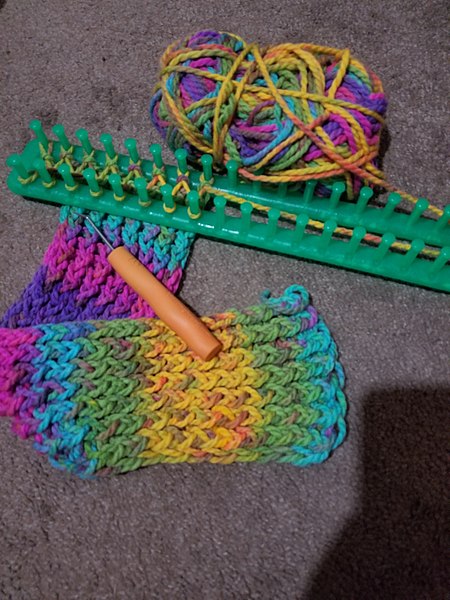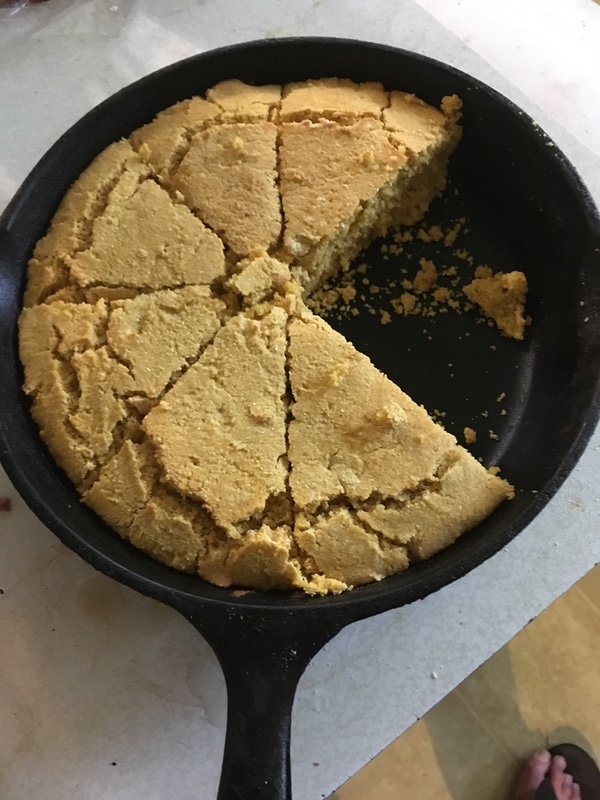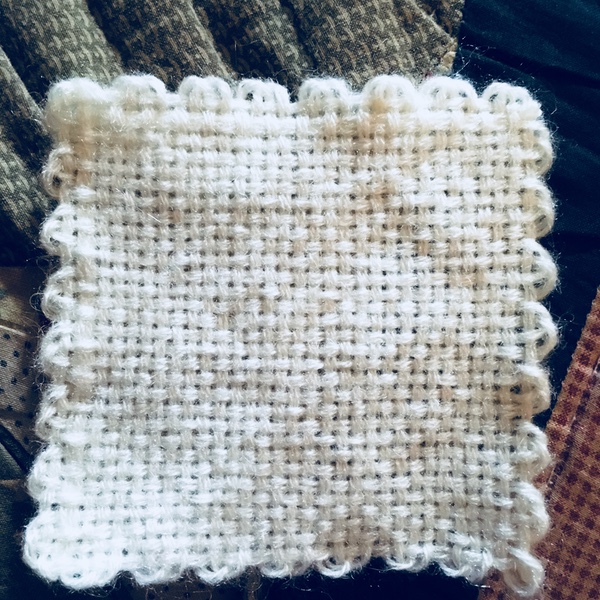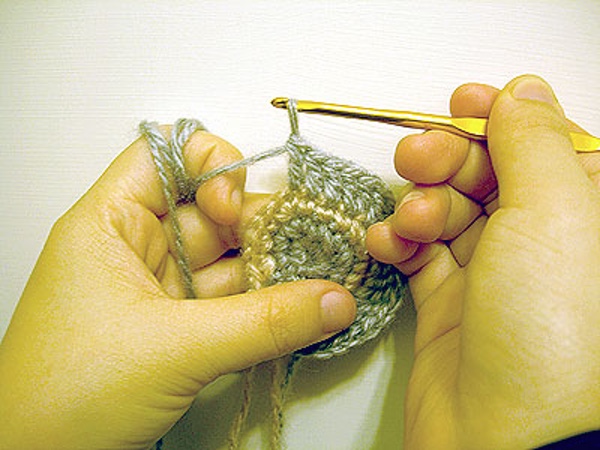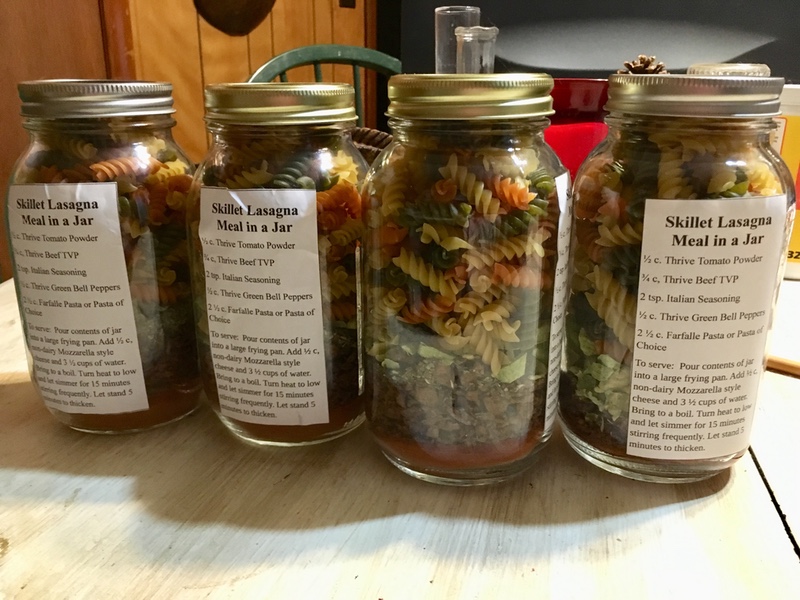The Crossroads Cardigan is my first pin loom weaving project. The inspiration for the cardigan is found in the “Weave-It Book.” Number Two. Medford, Massachusetts: Donar Products Corp., 1936. Page 4. Retrieved from http://www.eloomanation.com/projects.php. There were a number of design changes before it reached the final completion in order to achieve the look that I envisioned. There are some areas that could be improved, but I am pleased with my first project.
Tools Used:
- Zoom Loom
- 2″ Wunderwag Loom
- Yarn Weaving Needle (Included with the Zoom Loom and the Wunderwag Loom.)
- Tapestry Needle
- Needle Threader
- U. S. Size 5/3.75 mm Knitting Needles
- U. S. Size F/3.75 mm Crochet Hook
- U. S. Size G/4 mm Crochet Hook
Yarn Used:
- 4 Skeins Patons Lace Yarn Color Antique
Squares:
Using double strands of the Patons Lace yarn
- 42 Plain Weave Squares with the Zoom Loom
- 40 Crossroads Squares with the Zoom Loom (Written instructions for this weave are found in “Weave-It Weaves.” Book No. 1. Medford, Massachusetts: Donar Products, Corp., 1939. Page 29. Retrieved from http://www.eloomanation.com/projects.php.
- 16 Plain Weave Squares with the 2″ Wunderwag Loom
Layout
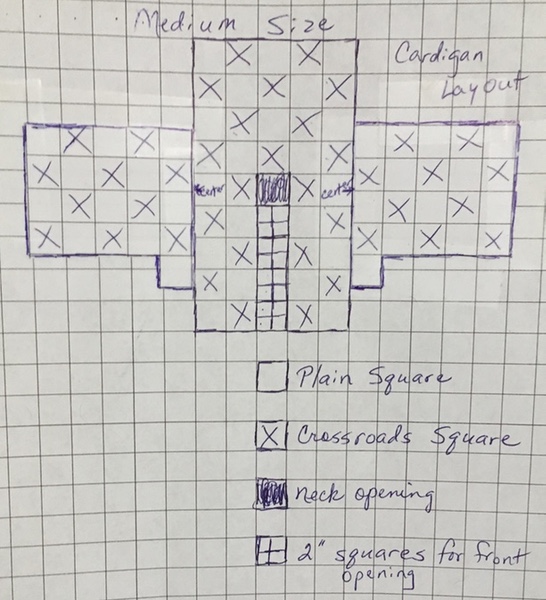
The squares are all joined together with the tapestry needle and a double strand of the yarn with a Cross Stitch. The instructions for this joining method are found on Page 30 of the “Weave-It Weaves.” Book No. 1. Medford, Massachusetts: Donar Products, Corp., 1939. Retrieved from http://www.eloomanation.com/projects.php. The squares must be turned as needed in order for the weaving loops to butt up against each other to do the Cross Stitch join. Be sure to keep the bars created in the Crossroads squares all facing in the same direction. In my case, I kept them all vertical.
Front Section Ribbing
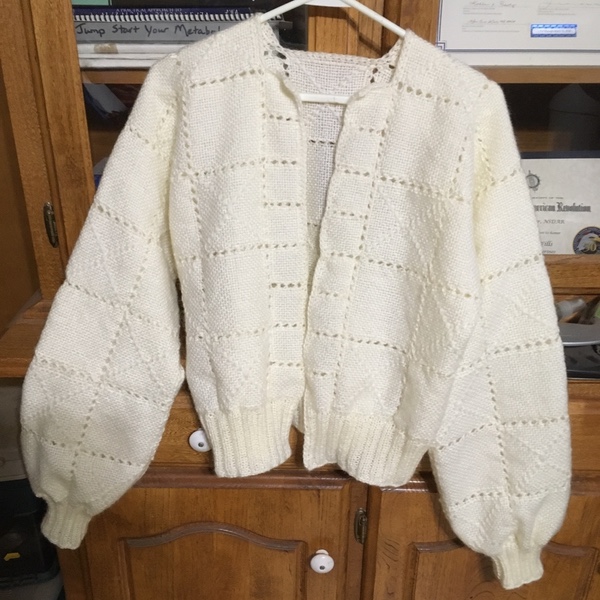
With right side facing and working from left to right, use a double strand of yarn and the size F crochet hook to pull loops through 40 of the loops formed from weaving. Place each loop on the knitting needle as it is formed. There should be a total of 40 loops on the knitting needle.
Row 1: Knit 12 stitches, work Knit 1 Purl 1 increase in next stitch. Knit to last 13 stitches. Work Knit 1 Purl 1 increase in next stitch. Knit remaining 12 stitches. Total of 42 stitches on knitting needle.
Row 2: Purl 2, Knit 2. Repeat across the row.
Row 3: Knit 2, Purl 2. Repeat across the row.
Even Rows through Row 24: Repeat Row 2.
Odd Rows through Row 23: Repeat Row 3.
Bind off.
Front and Neck Opening
Using size G crochet hook and double strand of yarn, single crochet along the front and neck opening edges using 3 single crochet in the corners at the top of the front edge and decrease single crochet stitch at the corners of the neck opening.
Back Section Ribbing
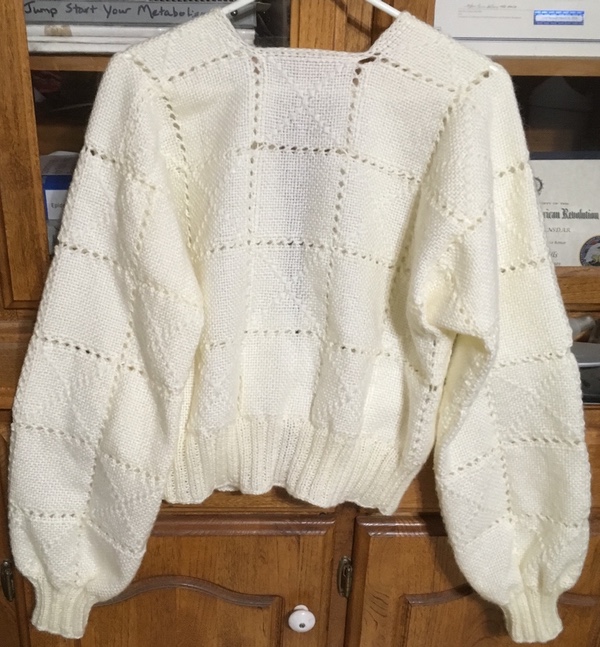
With right side facing and working from left to right, use a double strand of yarn and the size F crochet hook to pull loops through 80 of the loops formed from weaving. Place each loop on the knitting needle as it is formed. There should be a total of 80 loops on the knitting needle.
Row 1: Knit 26 stitches, work Knit 1 Purl 1 increase in next stitch. Knit 26 stitches. Work Knit 1 Purl 1 increase in next stitch. Knit remaining 26 stitches. Total of 82 stitches on knitting needle.
Row 2: Purl 2, Knit 2. Repeat across the row.
Row 3: Knit 2, Purl 2. Repeat across the row.
Even Rows through Row 24: Repeat Row 2.
Odd Rows through Row 23: Repeat Row 3.
Bind off.
Sleeve Ribbing
With right side facing and working from left to right, use a double strand of yarn and the size F crochet hook to pull loops through 42 of the loops formed from weaving evenly spaced along the cuff edge of the sleeve. Place each loop on the knitting needle as it is formed. There should be a total of 42 loops on the knitting needle.
Odd numbered rows – Row 19: Knit 2, Purl 2. Repeat across row.
Even numbered rows – Row 20: Purl 2, Knit 2. Repeat across row.
Bind off.
Sleeve and Side Seam
With tapestry needle and double strand of yarn, use mattress stitch in the ribbing areas and the Cross Stitch joining method for the remainder of each seam.

